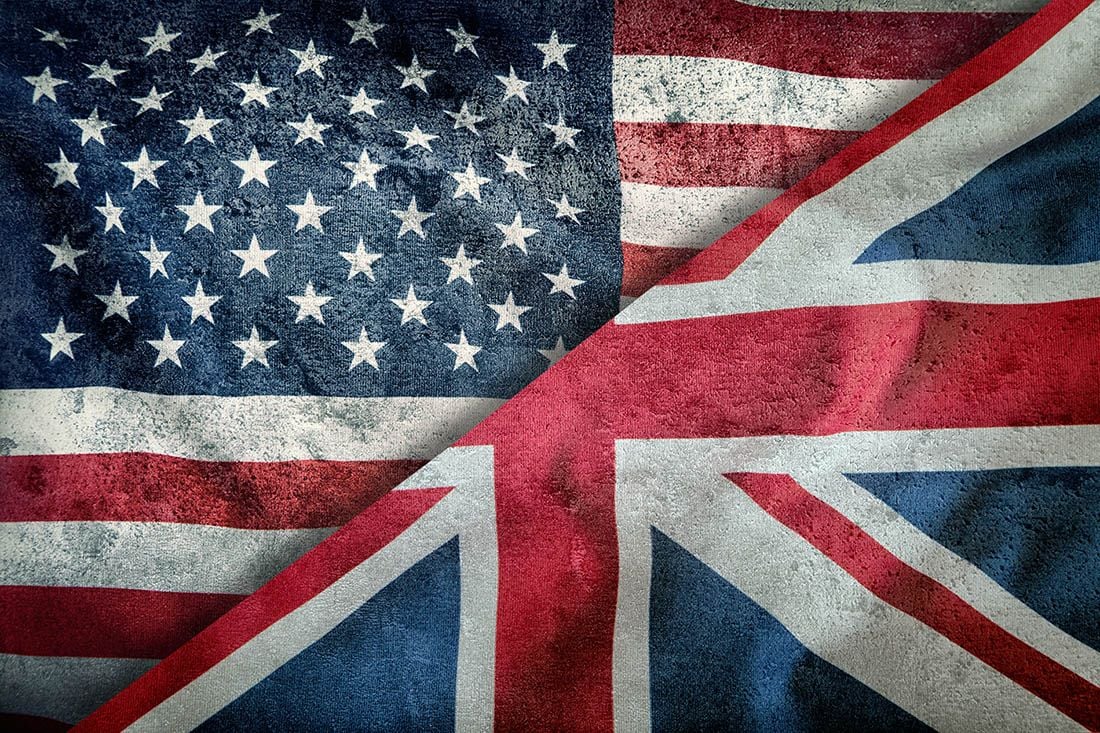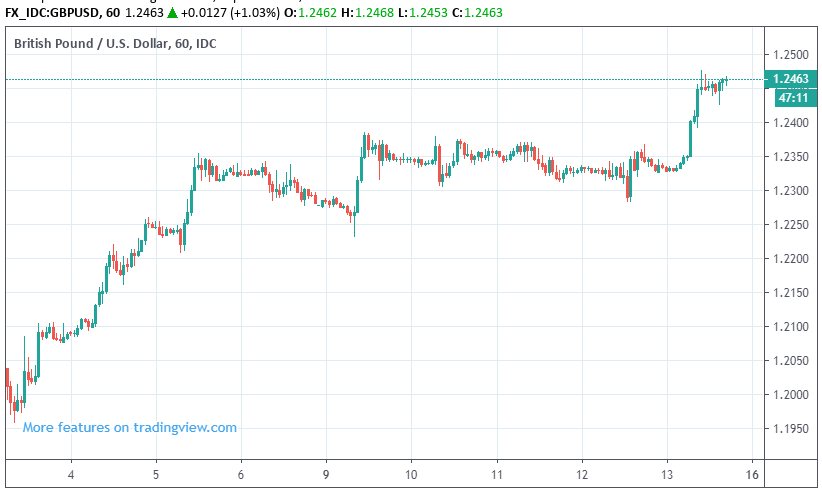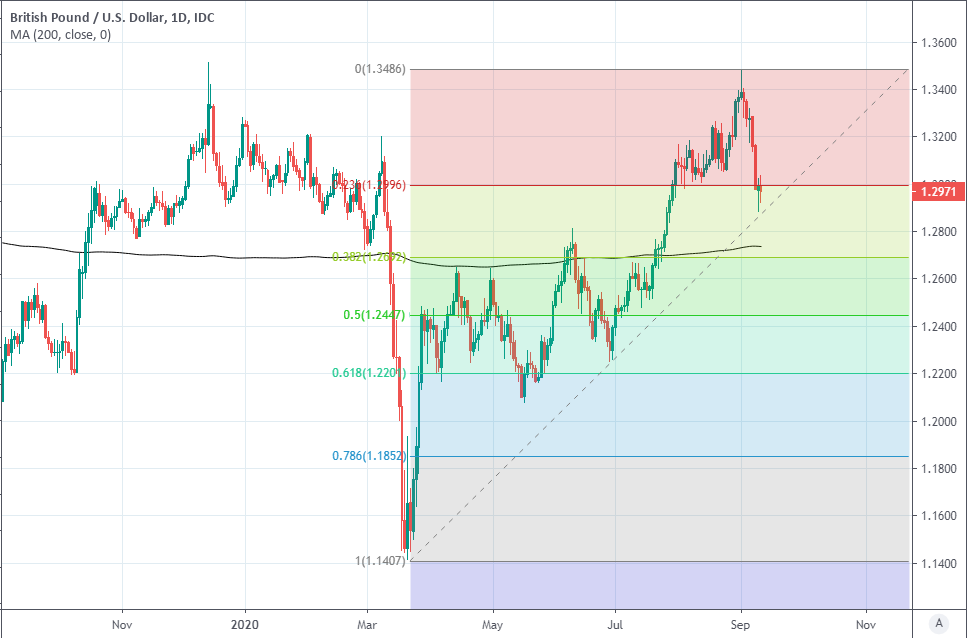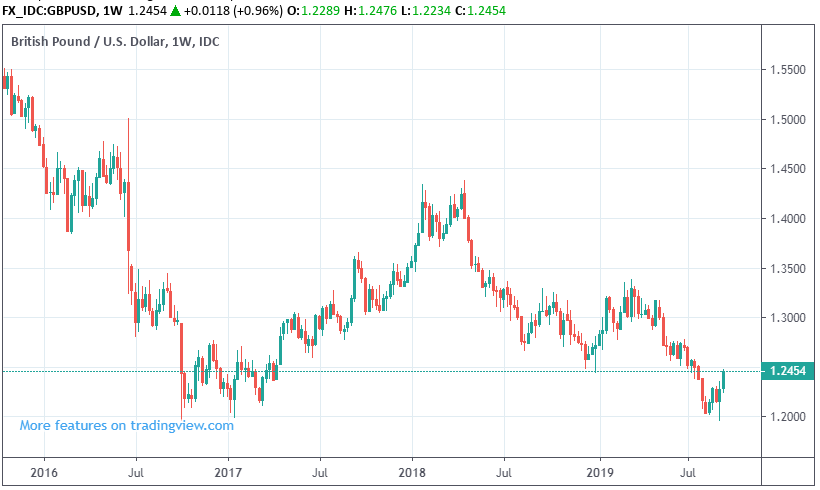Pound-Dollar Rate Running Out of Road as Chart Resistance and U.S. Retail Sales Weigh
- Written by: James Skinner

Image © Adobe Images
- Brexit-related rally drives GBP head-on into resistance on charts.
- As U.S. retail sales and CPI weigh, threaten the case for Fed rate cuts.
- But USD challenged by reports of U.S.-China deal to end the trade war.
- End of trade fight a boon for U.S. and global growth, bane for the USD.
The Pound-to-Dollar rate rallied Friday amid speculation that a shift in the UK government's stance on Brexit is afoot, with the move taking Sterling close to 'resistance' in the form of a 'pivot point' on the charts that risks proving insurmountable for the British currency.
Sterling was higher against all major currencies Friday as investors speculated the UK government might be softening its 'red lines' on Brexit in order to improve its prospects of securing an amicable exit from the EU ahead of an October 31 deadline. Reports of a planned meeting between Prime Minister Boris Johnson and European Commission chief Jean-Claude Juncker could keep the positive mood alive until Monday, but there's reason for doubting that it'll last much longer than that.
"GBP/USD's advance from its current September low at 1.1958 continues to have the May and June lows at 1.2506/59 in its sights. Between these levels and the mid-July high at 1.2580 the cross may struggle short-term," says Axel Rudolph, a technical analyst at Commerzbank. "Once a weekly Friday chart close above the 1.2310 August high has been made, we will change our weekly outlook to a bullish one."
Rudolph says the Pound-to-Dollar rate is in the process of "forming a bottom" after suffering punishing losses earlier this year, but a weekly close above 1.2310 is necessary to sustain upward momentum. The Pound was quoted as high as 1.2480 against the Dollar Friday, close to the 1.25 level at which Rudolph says he will walk away from his bullish bet on the British currency.

Above: Pound-to-Dollar rate shown at hourly intervals.
Commerzbank bought the Pound-to-Dollar rate when it was trading at 1.2069 last week and was originally targeting a move up to 1.2670, but it said Friday it'll exit the bet when the 1.25 level is reached. That coincides with a so-called "pivot point" on the charts, which is an area of support or resistance that technical analysts say can often lead to a reversal or pullback in exchange rate trends.
"Sterling's moderate rebound in recent days may be nearing its end as the good news from Parliament's exclusion of a No-Deal crash out now looks fully in the price. With an eye on resistance around 1.2382 ahead of the 1.2500 pivot, this returns us into more of a sell-on-rallies posture," says Ned Rumpeltin, European head of FX strategy at TD Securities. "With Parliament suspended, the ongoing Brexit debacle has moved on to a new phase - one where probabilities favour further GBP-negative headlines from Government ministers."
Commerzbank and TD Securities are not alone in being wary of the 1.25 pivot point on the Pound-to-Dollar rate chart because analysts at retail trading firm, Forex.com, also said Friday that those with a short-term exposure to the exchange rate should put Brexit headlines to one side and focus on incoming U.S. economic data and the technical picture on the charts. Forex.com is eyeing the prospect of a pullback in the exchange rate.
"Regardless of the longer-term fundamental backdrop, short-term traders need to watch incoming data and price action closely here," says Fawad Rzaqzada, an analyst at Forex.com. "We have arrived at an inflection point near the 1.25 handle. At 1.2475, the GBP/USD was testing the low from last year, at the time of this wiring. Once support, this level has the potential to turn into major resistance. Slightly above the psychologically-important 1.25 handle we have the 38.2% Fibonacci retracement level."

Above: Pound-to-Dollar rate shown at daily intervals.
Analysts are eyeing price action in the Pound-to-Dollar rate as markets respond to the release of U.S. retail sales data for August and as they continue to weigh the possible implications of Thursday's inflation data, which showed U.S. consumer price pressures surprising on the upside last month. Elevated and rising core-inflation is threatening to complicate the anticipated decision of the Federal Reserve (Fed) to cut its interest rate again next week, while strong sales data released in the noon hours has thrown another curveball at the central bank and might yet undermine the Pound-Dollar rate.
"USD is getting clobbered as we approach the end of the London morning, and there is a rising chance that the currency will end Q3 on a rather neutral footing (at least on a YD basis, which currently has the BBDXY up by 0.70% since the start of 2019)," says Stephen Gallo, European head of FX strategy at BMO Capital Markets. "We feel vindicated having warned our readers all week long that adding to USD long positions or positioning EURUSD aggressively from the short side this week were bad ideas."
The Pound-to-Dollar rate was aided higher Friday by positive developments in the U.S.-China trade war that deflated the safe-haven greenback, which has benefitted from uncertainty and economic fears thrown up by the tariff fight between the world's two largest economies. President Donald Trump dismissed on Thursday, a Bloomberg News report claiming the U.S. is eyeing a deal that temporarily ends the trade war with China but crucially, said that he might be open to such a thing in the future.
Trump told reporters after the 22:00 New York close Thursday that he would prefer to strike a lasting deal that resolves all issues but did not rule out an interim agreement that prevents fresh tariffs going into effect in October and December while potentially rolling back new levies already imposed this month. An end to the 18-month long tariff fight would be positive for the global economy and non-Dollar currencies, which have been the real losers from the conflict with the exception of the Yen and Swiss Franc.
Xinhua, China's state-run news agency, reported later on Friday that U.S pork and soybeans will be removed from a list of products that are being targeted with retaliatory trade tariffs that were imposed in July and September. Friday's announcement followed another decision to exempt other U.S. goods from tariffs, a move that was itself reciprocated by the U.S. on Wednesday this week.

Above: Pound-to-Dollar rate shown at weekly intervals.
"A narrow trade deal looks within reach which would support risk appetite. However,a narrow agreement may only partly bridge the range of disagreements,hence doing little to support the capex outlook. The ongoing EM rally may endure for now but turn sour in October," says David Adams, a strategist at Morgan Stanley. "While both the US and China have an incentive to maintain stability ahead of the ministerial-level talks, we believe the risks may be skewed toward further escalation."
Global growth has slowed because of the trade war and most currencies have ceded ground to the safe-haven and high-yielding Dollar as a result of it. And fears for the outlook have ratcheted higher still ever since the middle of August when the White House unveiled a plan to clobber all of China's exports to the U.S. that had not been covered with punitive tariffs up until that point. Trump has since increased the tariff rates involved, but delayed the implementation of some until October and December.
Markets have come to expect a series of Fed rate cuts before year-end as an ongoing global growth downturn catches brought on by the trade war with China bites the U.S. economy, and as President Donald Trump heckles the central bank from the virtual sidelines of his Twitter account, baiting it with relentless criticism in the apparent hope that it'll help to keep the economic expansion going by reducing borrowing costs for companies and consumers.
"Slowing US growth may bring the Fed closer to the point where it feels compelled to loosen financial conditions more than markets expect, weakening the USD. Meanwhile, markets may start to price in improved global growth prospects as a result of Chinese policy stimulus and encouraging news on US-China developments. As RoW growth looks relatively more attractive, broad measures of the USD may decline," says Morgan Stanley's Gek Teng Khoo.
Fed rate cuts, and expectations of more to come, have done little to change the fact that U.S. bonds still offer investors returns that are far superior to those available elsewhere in the developed world which is why they've not really damaged the Dollar. But with those rate cut expectations persisting as speculation of an end to the trade war mounts, the Dollar has turned lower because some investors see it auguring an economic recovery and, eventually, higher interest rates elsewhere in the world.
Time to move your money? Get 3-5% more currency than your bank would offer by using the services of foreign exchange specialists at RationalFX. A specialist broker can deliver you an exchange rate closer to the real market rate, thereby saving you substantial quantities of currency. Find out more here.
* Advertisement




